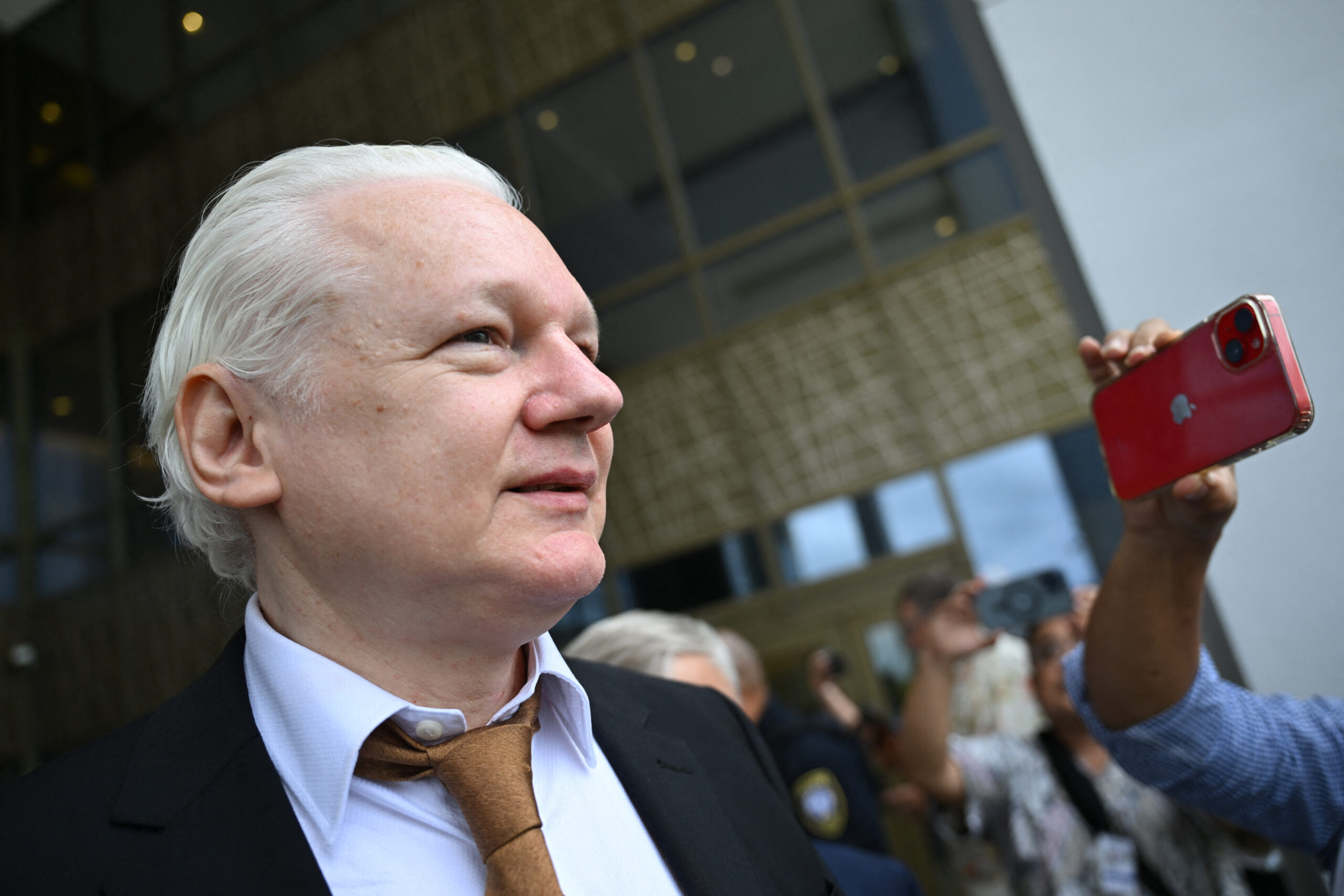Julian Assange: WikiLeaks’ controversial founder

WikiLeaks founder Julian Assange leaves the US Federal Courthouse in the Commonwealth of the Northern Mariana Islands in Saipan, Northern Mariana Islands, on June 26, 2024, after pleading guilty to a single count of conspiracy to obtain and disseminate national defense information. A US judge freed Julian Assange on June 26 in a plea deal that ends years of legal drama for the WikiLeaks founder, long wanted by Washington for revealing military secrets. Agence France Presse
LONDON — Julian Assange, who walked free Wednesday following a plea deal with US authorities that ended a years-long legal saga, is for many a fearless campaigner for press freedom.
But for others, the 52-year-old Australian was reckless with classified information and put people’s lives in danger.
Assange is the figurehead of the whistleblowing website that exposed government secrets worldwide, notably the explosive leak of US military files related to wars in Iraq and Afghanistan.
READ: WikiLeaks says Julian Assange is ‘free,’ has left UK
He has spent more than a decade either in custody or holed up in Ecuador’s London embassy, trying to avoid extradition — first to Sweden to answer allegations of rape, and then to the United States.
Born in Townsville, Queensland, in 1971, Assange had a peripatetic childhood and claims to have attended 37 schools before settling in Melbourne.
As a teenager, he discovered a talent for computer hacking, which brought him to the attention of the Australian police, but he admitted most of the charges levelled against him, for which he paid a fine.
READ: WikiLeaks founder Assange to be ‘free man’ after US plea deal
Assange launched WikiLeaks in 2006 with like-minded activists and IT experts.
“We are creating a new standard for a free press,” Assange told AFP in August 2010.
Embassy asylum
His legal battles began the same year, soon after he published revelations from classified documents about US military campaigns in Iraq and Afghanistan. Rape allegations in Sweden then followed, which he denied.
He was in Britain when Sweden sought his extradition. Ecuador granted him political asylum and let him into its London embassy.
Assange lived in a small apartment in the embassy for seven years from 2012, exercising on a treadmill and using a sun lamp to make up for the lack of natural light. He compared his predicament to living in a space station.
His lengthy stay in the mission ended, however, after a new government in Quito turned him over to British police in April 2019. He was arrested for jumping bail and jailed.
Swedish prosecutors dropped their rape investigation in 2019, saying that despite a “credible” account from the alleged victim there was insufficient evidence to proceed.
READ: Julian Assange: Transparency icon or enemy of the state?
But US authorities charged him with violating the US Espionage Act.
He was held at Belmarsh high-security prison in London for five years, during a protracted legal battle to decide if he should be extradited to the United States.
But, just two weeks before Assange was due to appear before a court to appeal against a ruling approving his extradition, he reached a plea deal with US authorities.
Assange travelled to the Northern Mariana Islands, a US possession in the Pacific, where he pleaded guilty to a single count of conspiracy to obtain and disseminate national defense information in exchange for his freedom, ending his years-long legal drama.
Russia claims
Assange’s backers, including the Chinese dissident artist Ai Weiwei and the late fashion designer Vivienne Westwood, have claimed the charges were politically motivated.
They repeatedly raised concerns about the physical and mental toll of his prolonged incarceration.
Nils Melzer, UN special rapporteur on torture, said the “progressively severe suffering inflicted” on Assange through his detention was tantamount to torture.
Assange was initially supported by human rights groups and newspapers that worked with him to edit and publish the US war logs.
Evidence included a leaked video showing a US military Apache helicopter firing on and killing a photographer and a driver from Reuters as well as several Iraqi civilians on a Baghdad street in 2007.
But many were horrified when WikiLeaks dumped unredacted documents online, including the names of informants. Assange fell out spectacularly with his media partners.
US lawyers have conceded that while they were “aware” of sources who disappeared after WikiLeaks published their names, they cannot prove that their disappearance was the result of being “outed by WikiLeaks”.
Questions also mounted over Assange’s relationship with Russia.
Special prosecutor Robert Mueller’s probe into interference in the 2016 US presidential election won by Donald Trump found that Russians “appeared” to have hacked Democrat Hillary Clinton’s campaign, and then “publicly disseminated those materials through various intermediaries, including WikiLeaks.”
Assange is the father of two boys with his wife Stella, whom he met when she worked on his case. They married in Belmarsh in March 2022.